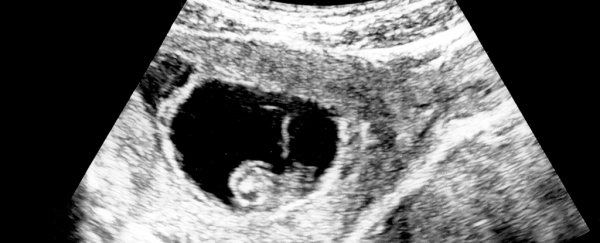So far this year, 11 states have enacted 90 laws meant to restrict abortion – the most in a single year since the 1973 Roe v. Wade ruling.
Now, lawmakers in nine US states have passed laws banning abortions when a fetal heartbeat can be detected, or at six weeks of pregnancy, according to data from the Guttmacher Institute, a nonprofit organization for sexual and reproductive health research and advocacy.
But what exactly do we mean when we talk about a "fetal heartbeat" at six weeks of pregnancy? Although some people might picture a heart-shaped organ beating inside a fetus, this is not the case.
Rather, at six weeks of pregnancy, an ultrasound can detect "a little flutter in the area that will become the future heart of the baby," said Dr. Saima Aftab, medical director of the Fetal Care Center at Nicklaus Children's Hospital in Miami.
This flutter happens because the group of cells that will become the future "pacemaker" of the heart gain the capacity to fire electrical signals, she said.
Related: Are you pregnant? 12 early signs of pregnancy
But the heart is far from fully formed at this stage, and the "beat" isn't audible; if doctors put a stethoscope up to a woman's belly this early on in her pregnancy, they would not hear a heartbeat, Aftab told Live Science.
(What's more, it isn't until the eighth week of pregnancy that the baby is called a fetus; prior to that, it's still considered an embryo, according to the Cleveland Clinic.)
It's been only in the last few decades that doctors have even been able to detect this flutter at six weeks, thanks to the use of more sophisticated ultrasound technologies, Aftab said. Previously, the technology wasn't advanced enough to detect the flutter that early on in pregnancy.
Although a lot of weight seems to be put on the detection of this flutter, "by no means does it translate to viability of the heart" or viability of the pregnancy, Aftab said.
The heart still has a lot of development to undergo before it is fully formed. Indeed, the entire first trimester of pregnancy is a time of "organogenesis," or the formation of organs, Aftab said.
After the detection of the flutter at six weeks, the heart muscle continues to develop over the next four to six weeks, undergoing the folding and bending that needs to happen for the heart to take its final shape, Aftab said.
"A lot of the heart development is still ongoing" during the first trimester, she said.
Related Content:
Top 10 Amazing Facts About Your Heart
11 Surprising Facts About the Circulatory System
This article was originally published by Live Science. Read the original article here.
